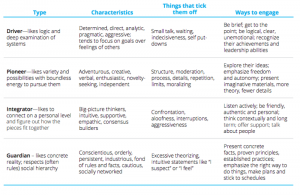Succession planning is always important, but sometimes it is urgent.
- A key leader resigns without notice.
- A high-level manager and several of his team members are fired for ethics violations.
- Or, a company is experiencing rapid growth and needs to accelerate hiring for leadership positions to keep up with the demand.
A surprisingly common problem
We encountered this very challenge when working with a global pharmaceutical company on track to triple its sales force within a very short period of time.
This company needed District Managers to lead its fast-growing sales teams across the United States. Like many companies, it had a tendency to promote its top performing sales representatives who didn’t necessarily have the ability or the desire to lead. Leadership turnover was high, and productivity and morale were beginning to suffer.
For talent managers, this problem is surprisingly common. While it’s standard practice to have a plan for replacing the CEO, it’s less typical to have strong leaders lined up to fill other key roles when the need arises.
In fact, just 15 percent of North American companies recently surveyed by Harvard Business Review said they had enough successors in their pipeline for key leadership positions. The costs of poor succession planning create a ripple effect throughout your organization, and that effect is magnified when someone leaves unexpectedly or your company’s growth accelerates.
When that happens, talent managers and HR professionals need to act fast. Here are four (4) best practices for identifying successors when you’re short on time.
1. Define success for the position
Internal stakeholders should be able to offer valuable insight into the characteristics, skills and experience needed to do the job well over the next 1-2 years.
Take the time to define what success looks like for the position in question and how you will measure results.
This “success profile” will give you a more complete picture of what you’re seeking in potential candidates, guiding your hiring, assessment, and onboarding process.
2. Assess high-potential employees — ready or not
Too often, managers make the mistake of promoting someone based on subjective criteria.
- He works hard.
- She’s likeable and well-respected.
- He’s been committed to the company for the past 10 years; he’s earned it.
Unfortunately, this short-sightedness can lead to costly hiring mistakes.
Employees with the highest potential aren’t necessarily those who put in the longest hours or get the best individual results. That’s why you need to look beyond the surface.
Use a robust process that includes manager feedback, behavioral interviews, leadership tests and simulations. (Yes, it’s possible to do this very quickly.) Using an objective third party to conduct these assessments adds rigor to the process and improves accuracy — all while making the most of your limited time.
When you use an objective process, you’ll have a more comprehensive, data-driven picture of your best prospects.
Don’t think anyone within your department or company is ready for the position in question? Put them through the assessment process anyway. Once you have a better idea of their strengths and skill gaps, you’ll be able to put them through a customized development program so they’ll be ready the next time an opportunity arises.
This shows your top talent you’re committed to them, boosting morale and improving retention.
3. Don’t be afraid to look outside department walls
Don’t assume your next district manager has to come from sales.
The best candidate may come from another department. He or she may have a different educational background or a unique set of experiences, which can bring a fresh perspective to the position.
In fact, it’s not uncommon for large companies to “rotate” high-potential employees through several different roles over the course of a few years to prepare them for leadership positions.
4. Benchmark against external candidates
While it’s more cost-effective and efficient to promote from within, you may need to go beyond your internal resources to find the right fit. Even if you feel confident you can find your next leaders within your company, it’s a good idea to bring in several external candidates for benchmarking purposes, if nothing else.
LinkedIn is a great place to begin your search, but when it comes to assessing talent, it’s just a step up from reviewing resumes. Most candidates have invested considerable time positioning themselves and their skills, and it’s tough to separate those who truly are a good fit from those who are merely good at self-promotion.
That’s why some companies are turning to unconventional recruiting tactics, such as “going incognito” to observe individuals at work or finding unique ways to get their attention on social media.
Of course, recruiting external candidates comes with its own risks, making a strong assessment process even more essential.
Succession planning is your best defense against a crisis
Once your short-term needs have been met and your company is no longer in crisis mode, it’s time to re-evaluate the way you identify and develop leaders.
A strong long-term succession plan is the best way to guard against unexpected vacancies in your leadership. Now that you’ve created success profiles to define what skills and characteristics are essential for the position you’ve just filled, you can apply the same approach to all key leadership positions.
Here are three (3) important tips to keep in mind:
- Develop a long-term strategy to identify high-potential employees for those positions and accelerate their development with targeted training programs.
- In addition to formal training programs, work with business leaders to provide them with new assignments that will stretch their skills.
- Make sure you’re measuring results. Leadership development is an investment in your company’s most important assets, and you need to be sure you’re getting a return on your investment.
When done right and over time, research shows long-term succession management consistently pays off. The Corporate Leadership Council has found companies with top-tier leadership teams outperform others by nearly 19 percent. They also tend to be rewarded with higher employee engagement, higher levels of productivity, lower turnover and lower associated costs.
Succession planning isn’t just a strategy to deploy when you’re in crisis mode—it’s an insurance policy as essential as any other risk management plan.
Business & Finance Articles on Business 2 Community
(53)







